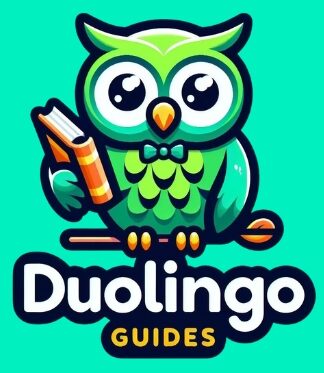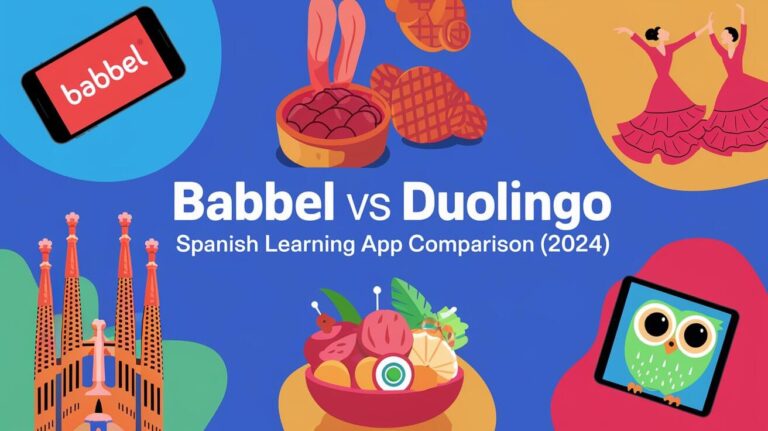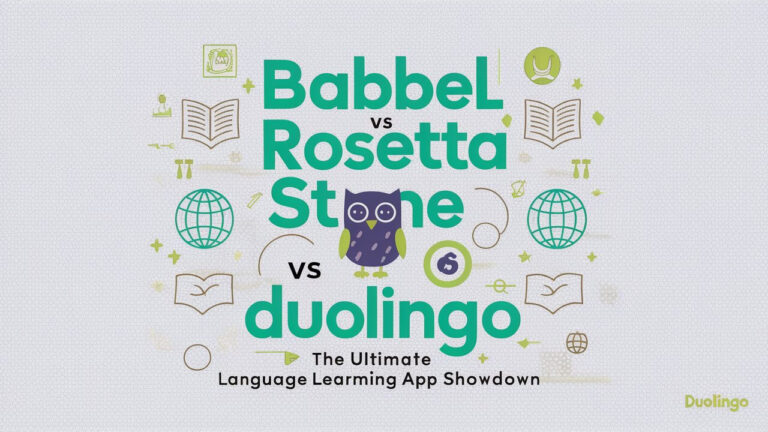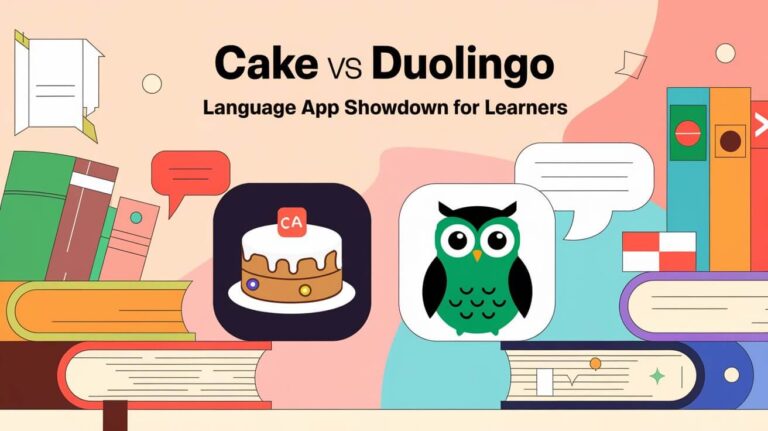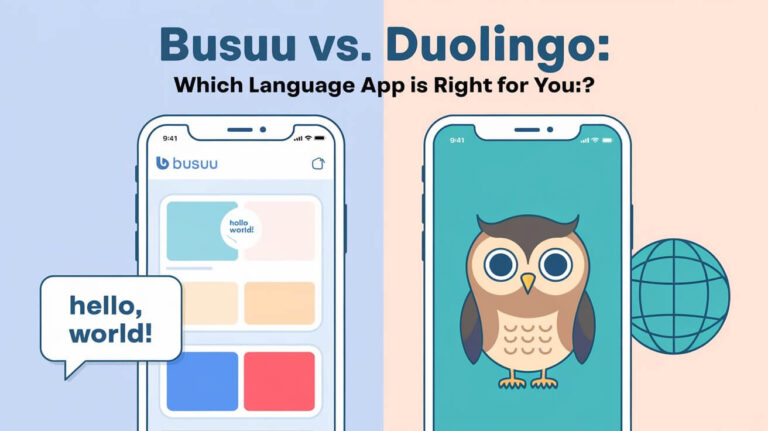Learning a new language opens doors worldwide. Today’s tech makes starting easier than ever. Mango Languages and Duolingo stand out among language apps. Mango focuses on real-world chat and culture. Duolingo turns learning into a game to keep you hooked. Let’s see how these two stack up, so you can pick the right one for your language goals.
Introduction to Mango Languages and Duolingo
Mango Languages and Duolingo are both designed to help you learn a new language, but they take different paths to get you there. Let’s start with a quick overview of each platform.
Mango Languages is a comprehensive language learning platform that offers courses in over 70 languages. It’s known for its focus on practical, conversation-based learning and its inclusion of cultural notes to provide context for the language you’re learning.
Duolingo, on the other hand, is a free language learning app that uses gamification to make learning fun and addictive. It offers courses in over 40 languages and uses a variety of exercises to help you practice reading, writing, listening, and speaking skills.
Key Features of Mango Languages
Course Structure and Content
Mango Languages structures its courses around real-life conversations and situations. Each lesson builds on the previous one, introducing new vocabulary and grammar concepts in context. The app uses a method called “intuitive language construction” to help you learn how to create your own sentences, rather than just memorizing phrases.
Language Options
With over 70+ languages available, Mango Languages offers an impressive variety. This includes popular languages like Spanish, French, and Mandarin Chinese, as well as less commonly taught languages like Icelandic, Punjabi, and Cherokee.
Cultural Notes and Context
One of Mango’s standout features is its inclusion of cultural notes throughout the lessons. These provide insights into the customs, traditions, and social norms of the countries where the language is spoken, helping you understand not just the words, but the context in which they’re used.
Speaking and Listening Practice
Mango Languages includes voice comparison technology that allows you to record yourself speaking and compare your pronunciation to that of a native speaker. This feature helps you improve your accent and speaking confidence.
Key Features of Duolingo
Gamified Learning Approach
Duolingo turns language learning into a game, with points, levels, and rewards to keep you motivated. The app’s mascot, a green owl named Duo, cheers you on as you progress through lessons and maintains your daily learning streak.
Language Options
Duolingo offers courses in over 40 languages, including popular options like Spanish, French, and German, as well as constructed languages like Klingon and High Valyrian for the more adventurous learners.
Skill Tree and Progress Tracking
Duolingo organizes its lessons into a skill tree, with each branch representing a different topic or grammar concept. As you complete lessons, you unlock new skills and can see your progress visually on the tree.
Speaking and Listening Exercises
The app includes speaking exercises where you can practice pronunciation, as well as listening exercises to improve your comprehension skills. However, these features are more limited compared to Mango Languages.
Pricing Comparison: Mango Languages vs Duolingo
When it comes to cost, there’s a significant difference between these two platforms.
Mango Languages offers a subscription-based model. A basic subscription for one language costs $11.99 per month, while an all-access subscription for all languages is priced at $19.99 per month. They also offer annual subscriptions at a discounted rate.
Duolingo, in contrast, is primarily free to use. You can access all language courses and features without paying a cent. However, they do offer a premium version called Super Duolingo (previously Duolingo Plus) for $12.99 per month, which removes ads, allows offline access, and provides additional features.
User Interface and Experience
Mango Languages’ Interface
Mango Languages has a clean, professional interface that’s easy to navigate. The layout is straightforward, with lessons clearly organized and easy to access. The design is less flashy than Duolingo’s, focusing more on functionality and clarity.
Duolingo’s Interface
Duolingo’s interface is colorful and playful, reflecting its gamified approach. The app uses bright colors, fun animations, and a clear visual hierarchy to guide users through lessons. The design is engaging and can make learning feel more like playing a game than studying.
Effectiveness for Language Learning
Mango Languages’ Learning Methodology
Mango Languages uses a methodology they call “intuitive language construction.” This approach focuses on teaching you how to build your own sentences and express your own thoughts, rather than just memorizing set phrases. The inclusion of cultural notes also helps you understand the context of the language, which can be crucial for effective communication.
Duolingo’s Learning Methodology
Duolingo uses a spaced repetition system, which introduces and reviews concepts at gradually increasing intervals to optimize memorization. The app also adapts to your learning speed, providing more practice in areas where you struggle. While effective for building vocabulary and basic grammar skills, some critics argue that Duolingo’s approach may not prepare learners for real-world conversations as well as Mango Languages does.
Strengths and Weaknesses
Mango Languages Pros and Cons
Pros:
- Focus on practical, conversational language
- Inclusion of cultural notes for context
- Wide range of languages available
- Voice comparison technology for pronunciation practice
Cons:
- More expensive than Duolingo
- Less gamified, which some learners might find less engaging
- Some languages have less extensive content than others
Duolingo Pros and Cons
Pros:
- Free to use
- Gamified approach makes learning fun and addictive
- Adaptive learning system
- Strong community features
Cons:
- Less focus on conversational skills
- Cultural context is often missing
- Ads in the free version can be disruptive
- Some users find the sentences and phrases less practical for real-world use
Target Audience Comparison
Who Is Mango Languages Best For?
Mango Languages is ideal for learners who:
- Are serious about achieving conversational fluency
- Want to understand the cultural context of the language
- Prefer a structured, lesson-based approach
- Are willing to invest financially in their language learning
Who Is Duolingo Best For?
Duolingo is great for learners who:
- Are just starting out with language learning
- Enjoy a gamified learning experience
- Want to learn casually or on a tight budget
- Are motivated by progress tracking and community features
Additional Resources and Tools
Mango Languages Extras
Mango Languages offers several additional features to enhance your learning:
- Mango Movies: Learn through foreign language films with interactive subtitles
- Mango Live: Virtual tutoring sessions with native speakers (for an additional fee)
- Specialty courses: Business, medical, and legal language courses for professionals
Duolingo Extras
Duolingo also provides extra resources:
- Duolingo Stories: Short stories to improve reading comprehension
- Duolingo Podcasts: Audio content for select languages to improve listening skills
- Duolingo Events: Virtual language exchange meetups (currently paused)
Community and Social Features
Mango Languages Community
Mango Languages has limited community features. While you can’t directly interact with other learners through the app, they do maintain active social media accounts where users can engage and share experiences.
Duolingo Community
Duolingo has a strong community aspect. The app includes:
- Leaderboards to compete with friends and other learners
- Discussion forums for each skill to ask questions and share tips
- A follow system to connect with other learners
- Clubs (in some countries) for group learning and motivation
Mobile App Comparison
Mango Languages Mobile Experience
Mango Languages offers a mobile app that mirrors the functionality of its web version. The app is well-designed and allows for seamless learning on the go. However, some users report that the app can be slow to load at times.
Duolingo Mobile Experience
Duolingo’s mobile app is its primary platform and offers a smooth, user-friendly experience. The bite-sized lessons are perfect for mobile learning, and the app syncs progress across devices. The mobile version includes all the features of the web version, making it a comprehensive on-the-go learning tool.
Which App Offers Better Value?
When considering value, it’s important to look at both cost and what you get for your money.
Duolingo offers incredible value for those on a budget, as you can access all of its language courses and most features completely free. The gamified approach and community features can help keep you motivated, which is valuable for maintaining a consistent learning habit.
Mango Languages, while more expensive, offers value in its focus on practical, conversational language skills and cultural insights. If your goal is to achieve functional fluency and understand the cultural context of the language, Mango Languages might provide better value despite the higher cost.
Conclusion
Both Mango Languages and Duolingo have their strengths, and the best choice depends on your learning style, goals, and budget.
Choose Mango Languages if:
- You’re serious about achieving conversational fluency
- You want to understand the cultural context of the language
- You prefer a structured, lesson-based approach
- You’re willing to invest financially in your language learning
Choose Duolingo if:
- You’re a beginner or casual learner
- You enjoy gamified learning experiences
- You’re on a tight budget
- You’re motivated by progress tracking and community features
Remember, the best language learning app is the one you’ll use consistently. Both Mango Languages and Duolingo offer free trials, so consider trying both to see which one suits your learning style best. Whichever you choose, the key to success is regular practice and a commitment to your language learning journey!
